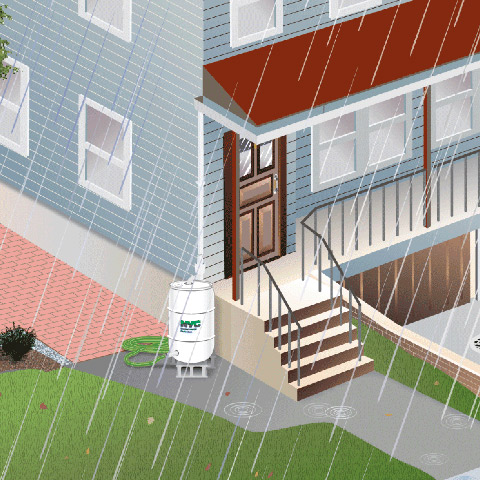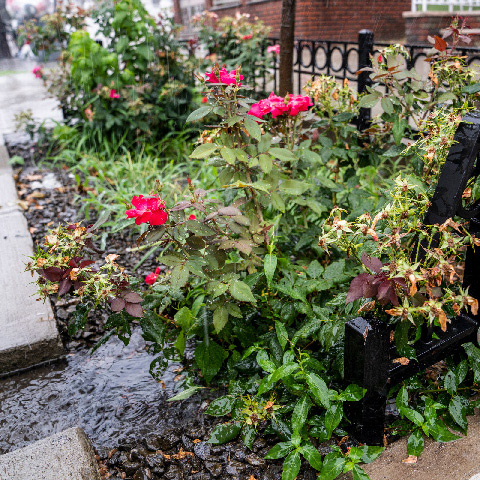
 Environmental Protection311
Environmental Protection311 Search all NYC.gov websites
Search all NYC.gov websites
Monitor Conditions During the Storm

The City monitors flood conditions via traffic cameras, social media, 311 complaints, and other sources to understand conditions on the ground and deploy appropriate resources to respond to flooding issues.
During a storm, the City will:
Monitor conditions and respond in real time:
- The City will expand FloodNet, a network of street flooding sensors designed to better understand the frequency, severity, and impacts of flooding in NYC. These sensors will be installed in the most vulnerable areas for real-time data collection. In partnership with the City University of New York and New York University, the Mayor’s Office of Climate and Environmental Justice will install 50 flood sensors across the city and launch a public dashboard in 2022. This effort will expand to 500 sensors by 2026, providing both real time flooding information to officials and residents while a hyperlocal historical record of flooding that can be used to inform future mitigation efforts.
- NYC Emergency Management, DOT, NYPD, and DEP will monitor traffic camera feeds to quickly identify flooding and respond immediately.
- DEP, DOT, and NYPD will deploy emergency responders to close roads, remove debris, and clear drainage blockages.
Communicate current hazards:
- NYC Emergency Management will frequently update the public on the most recent forecasts, travel advisories, and major road closures or transit impacts to keep New Yorkers informed and safe.
- NYC Emergency Management will continue to use its enhanced public communications with a more aggressive early warning system, including messaging for residents to “prepare” and potentially “move to higher ground,” if conditions warrant. The new messaging has been used for several weather events since Fall 2021 to warn New Yorkers of potential storm conditions.
But we all have a role to play:
If you rent, own, or live in a 1–4 family home, you should:
- Stay home during expected intense storms, don’t drive or order delivery services.
- If you are driving or in transit, listen to warnings of transit impacts and never drive or walk through standing water.
- If you live in a property susceptible to flooding, monitor conditions on your street.
If you rent, own, manage, or live in a large property with several units, you should:
- Monitor conditions and alert tenants as necessary if your property is susceptible to flooding.
Monitor Conditions During the Storm
Notify NYC
Sign up to receive alerts from the City's official source for information about emergencies.
311 Online Account Creation
Create a 311 online account to track your service requests.
Flood Prevention
There’s actually a lot New Yorkers can do to protect our City from flooding.
Increasing Stormwater Resilience
Our long term vision in the face of climate change.






